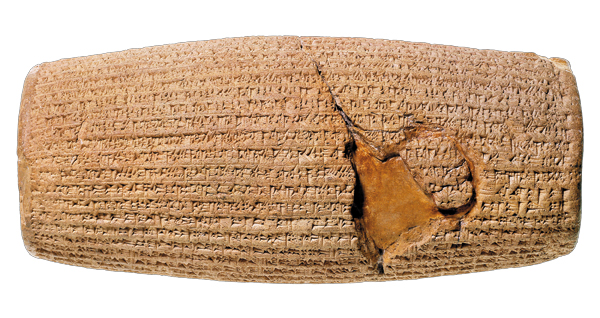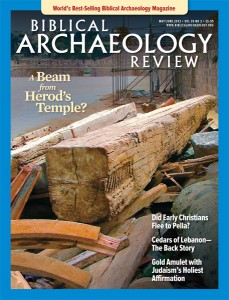Strata: Exhibit Watch: Cyrus Cylinder Begins American Tour

Since its discovery more than 130 years ago, the Cyrus Cylinder has been a striking example of an archaeological artifact that independently confirms a Biblical account.
The Book of Ezra begins by telling of an edict of King Cyrus of Persia that permitted the Jewish exiles in Babylonia (which Cyrus had just conquered) “ ‘to go up to Jerusalem in Judah, and rebuild the house of the Lord, the God of Israel,’ ” which the Babylonian troops had destroyed, and to return to their homes (Ezra 1:1–4; see also 2 Chronicles 36:22–23; Ezra 5:13–17, 6:3, 14). Likewise in the cuneiform inscription of the clay Cyrus Cylinder (c. 539 B.C.E.), which finishes the first leg of a museum tour at the end of April, the Persian king boasts of how he conquered the lands of Babylon and saw to the people’s well-being, including a statement about “the holy cities beyond the Tigris whose sanctuaries had been in ruins over a long period, the gods whose abode is in the midst of them, I returned to their places and housed them in lasting abodes. I gathered together all their inhabitants and restored (to them) their dwellings.”a
Already a library member? Log in here.
Institution user? Log in with your IP address.

